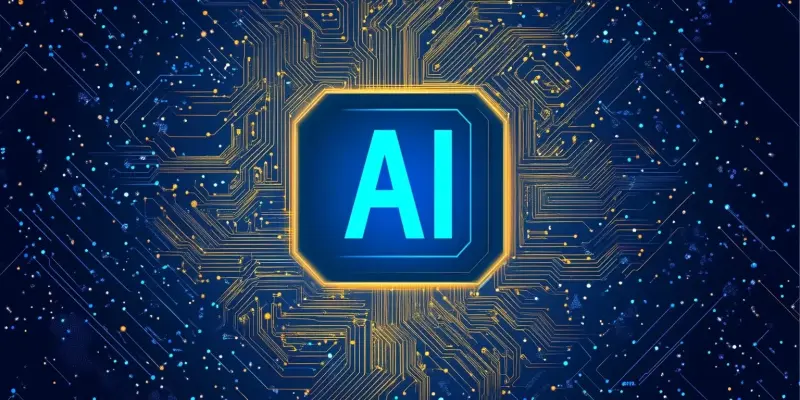The widespread availability of the ChatGPT-4 image generator has sparked an intense debate over its impact on creativity and employment.While initially introduced with limitations for free users, this innovative tool has become immensely popular, particularly among paid subscribers who can generate unlimited images. Despite encountering some technical setbacks during its launch, the feature’s ability to create images in distinctive styles, such as Studio Ghibli animation, rapidly garnered significant user engagement and demand.As AI models continue to evolve, the discourse surrounding their implications for both creativity and job security remains a topic of heated discussion.
The Rise of AI Image Generators
The proliferation of AI tools like the ChatGPT-4 has transformed various industries by enabling the creation of diverse content, previously reliant on human input. Companies such as Apple, Microsoft, and Google, alongside numerous startups, are advancing their AI capabilities, marking an ongoing “AI arms race” focused on enhancing technological prowess. Consequently, these tools are now employed to produce a range of content, including images and videos, shifting the paradigm of creative content generation.This technological evolution has prompted both enthusiasm and apprehension as stakeholders navigate the benefits and risks associated with AI-driven innovation.
Critics and proponents alike have weighed in on the emergence of AI image generators. According to AI consultant Serena Huang, these tools hold the promise of boosting productivity and fostering innovation, particularly within the realms of content creation and marketing. However, she also points out that there are significant challenges to consider, such as copyright issues, the substantial energy consumption associated with AI operations, and the potential economic consequences for creative industries. These concerns highlight the complex dynamics of integrating AI into traditional workflows, where efficiency gains must be balanced against ethical and practical considerations.The advent of AI image generators has prompted wider public scrutiny, as skeptics increasingly become adopters of this technology. This shift in perception underscores the importance of engaging with AI’s capabilities in a nuanced manner.As companies strive to enhance their AI offerings, the competitive landscape is expected to drive further advancements, potentially leading to new applications and improved functionalities. This trajectory suggests an ongoing evolution in how AI is perceived and utilized, with implications for both individual creators and larger industries.
Balancing Creativity and Job Security
One of the primary concerns raised by the growth of AI image generators revolves around their impact on job security within creative fields.The automation of tasks traditionally performed by humans raises questions about the future of employment in sectors such as graphic design, animation, and digital art. While AI tools can perform repetitive and time-consuming tasks efficiently, there is a fear that they may also replace human jobs, leading to significant economic and social repercussions.This tension between technological advancement and job preservation is a central theme in discussions about AI’s role in the workforce.
Despite these concerns, there are arguments that AI can complement human creativity rather than replace it.By automating mundane tasks, AI tools can free up creative professionals to focus on more complex and innovative aspects of their work. This collaborative approach suggests that AI could enhance, rather than diminish, the creative process, enabling professionals to push the boundaries of their craft. However, achieving this balance requires careful consideration of how AI tools are integrated into existing workflows and the extent to which human oversight remains essential.
The ethical implications of AI-generated content also warrant attention.Issues such as copyright infringement and intellectual property rights are particularly pertinent, as AI tools often generate images based on vast datasets that include copyrighted material. Ensuring that content creators receive proper recognition and compensation for their work is crucial in maintaining a fair and equitable creative ecosystem.As AI technology continues to evolve, establishing robust legal frameworks and ethical guidelines will be essential in addressing these challenges and safeguarding the rights of all stakeholders involved.
Navigating the Future of AI in Creativity
The widespread availability of the ChatGPT-4 image generator has ignited a heated debate about its effects on creativity and the job market. Initially launched with limitations for free users, this cutting-edge tool quickly gained immense popularity, especially among paid subscribers who enjoy the benefit of generating unlimited images. Despite some technical hitches during its introduction, the tool’s capacity to create images in unique styles, like Studio Ghibli animation, swiftly drew substantial user engagement and demand.As AI models continue to progress, the conversation concerning their impact on both the creative sphere and employment remains a hot topic. Supporters argue that these tools inspire creativity by offering new possibilities, while critics worry about potential job losses in creative fields.As AI technology continues to advance, it’s crucial to balance innovation with the preservation of human creativity and employment opportunities. This ongoing debate reflects the broader challenges and opportunities presented by rapid technological advancements in the modern era.

